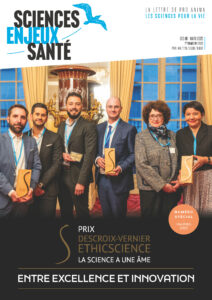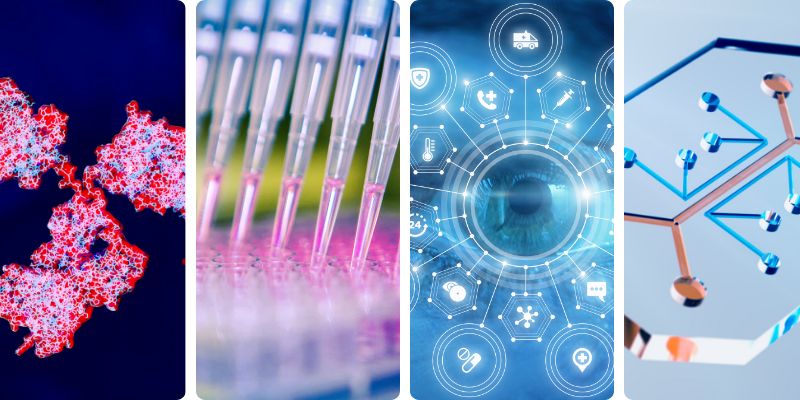
US Working Group on Standards for OoC, XCellR8’s AcuTox research, Human Vagina-on-a-Chip protocol
News on non-animal methods
FEB 26 - MARCH 1, 2024NEWS, REPORTS & POSITION STATEMENTS
1. National Institute of Standards and Technologies (NIST)-Led Working Group Developing Standards for Organ-on-a-Chip Research
When testing a new medicine, researchers must do more than assess how well that drug works. They also have to determine whether the medicine has some negative, unintended consequences. To do that now, scientists have a couple of choices in preclinical studies : They test the drugs in vitro – that is, with laboratory equipment outside the body – and in vivo – that is, in animal models. A growing number of researchers are experimenting with a third way, something that’s sort of in between the two. It’s called organ-on-a-chip, and it involves growing real tissue from a human organ on a small structure that mimics what that organ tissue would experience inside a body.
Though many groups around the world are developing this technology, each has its own protocols, styles of measurements, and even terminology. As a result, the studies can’t be easily intercompared, which some researchers feel is slowing progress in the field.To address this need for standardization, NIST is leading a working group to develop a set of guidelines and standards for organ-on-a-chip systems. The group includes researchers from industry, academia, and other government agencies, from around the world.
In a paper published this week in the journal Lab on a Chip, the working group laid out their case for why these standards will help the field grow.
2. Regulators Should Value Non-Human Animals by Cass R. Sunstein from Harvard Law School
Some regulations do not only reduce human deaths, injuries, and illnesses ; they also protect non-human animals. However, as the author Cass R. Sunstein emphasises in his article published in SSRN, regulatory impact analyses, required by prevailing executive orders, usually do not disclose or explore benefits or costs with respect to non-human animals, even when those benefits or costs are significant. This is an inexcusable gap. If a regulation prevents dogs, horses, or cats from being killed or hurt, the benefits should be specified and quantified. This proposition holds even if those benefits are in some sense incidental to the main goal of the regulation. At the same time, turning the relevant benefits into monetary equivalents raises serious challenges, akin to those raised by the valuation of statistical children.
TOOLS, PLATFORMS, CALLS
3. The NC3Rs International 3Rs prize
Application for the NC3Rs International 3Rs Prize is now open. The annual prize awards a paper that describes outstanding and original work that has or could have major impacts on the replacement, reduction or refinement of the use of animals in research. This award consists of a £28k prize grant and a £2k personal award. A £20k contribution is provided by GSK with all remaining funds, including the personal award made by the NC3Rs.
The Prize is awarded to an individual who may be the Principal Investigator, research lead or any other author. Any researcher in academia or industry, in the UK or overseas is eligible. The deadline to submit the application is Wednesday 1 May 2024.
Among the past winners : Dr Lisa Wagar, California Irvine University for her entirely animal-free organoid model of the adaptive immune response that provides new capabilities and insights to support the rapid development of broadly protective vaccines. Dr Daniel Ferreira, Instituto de Investigação e Inovação em Saúde, Portugal, for its method that enables organ-on-a-chip systems to be designed, developed and printed with commercially available equipment and materials.
INDUSTRY, BIOTECH & PARTNERSHIPS
4. Animal Aid grants new funding for XCellR8’s ground-breaking AcuTox research
XCellR8 announced Animal Aid’s grant towards XCellR8’s animal-free acute toxicity research (AcutoX). This new grant will build on the solid foundation of AcutoX, combining this with innovative technology to develop a non-animal replacement for inhalational toxicity tests . AcutoX is a human cell-based screen that predicts the toxicity of chemicals entering the human body by mouth. As indicated in XCellR8 press release, AcuTox is already being used by some leading companies, and crucially, regulators are interested in incorporating the test into their recommended programmes.
SCIENTIFIC DISCOVERIES & PROTOCOLS
5. Solution on a 3D Human Reconstructed Bladder Epithelium
Medical Device qualification and classification are a very hot topic and the contribution of “smart and robust” approach with advanced models is needed. Indeed, the Medical Device Regulation (EU) 2017/745 (MDR) states that : ‘Manufacturers are required to justify scientifically in the technical file the rationale for the qualification of their products as devices and the mode of action of such devices’.
VitroScreen proposed a new in vitro non clinical model that have developed on colonized bladder epithelium to assess the mechanism of action of a Class III Medical Device.The experimental system has created the robust body of evidences to comply with Medical Device qualification requirements of MDR 2017/745.
6. Modeling Healthy and Dysbiotic Vaginal Microenvironments in a Human Vagina-on-a-Chip
Women’s health, and particularly diseases of the female reproductive tract, have not received the attention they deserve, even though an unhealthy reproductive system may lead to life-threatening diseases, infertility, or adverse outcomes during pregnancy. Current in vitro and animal models do not fully recapitulate the hormonal changes, microaerobic conditions, and interactions with the vaginal microbiome.
The advent of Organ-on-a-Chip technology that can mimic tissue-tissue interfaces, vascular perfusion, interstitial fluid flows, and the physical microenvironment of a major subunit of human organs can potentially serve as a solution to this problem. A human Vagina Chip, recently developed by the Wyss Institute, the Vascular Biology Program and Department of Surgery, the Boston Children’s Hospital, and Harvard John A. Paulson School of Engineering and Applied Sciences, replicates the physiological responses of the human vagina to healthy and dysbiotic microbiomes. The detailed protocol for creating these Chips has been described in the article below.
UPCOMING WEBINARS, WORKSHOPS, SYMPOSIA
Check out our events interface


